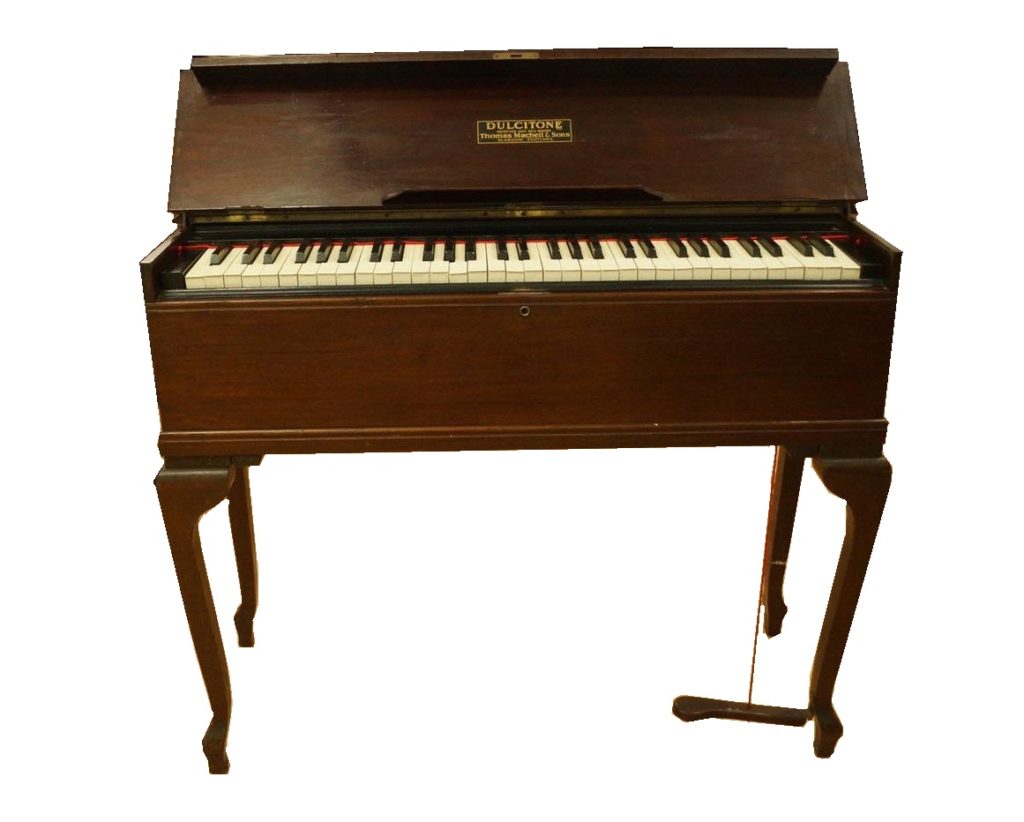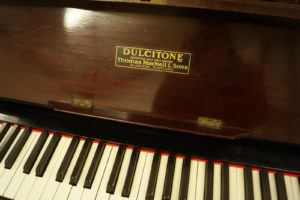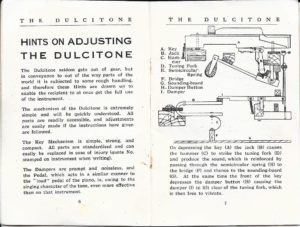Dulcitone Thomas Machell and Sons c. 1870
Description

| Date: | 1870 |
| Origin: | Glasgow |
| Serialnumber: | --- |
The Dulcitone is a Scottish keyboard instrument that belongs to the group of idiophones. Using a keyboard and felted hammers, tuning forks are set in vibration and produce the sound. The instrument was invented by Thomas Machell in Glasgow in 1864. The Irishman Charles Glagetti pursued the first attempts at creating such a sound. In 1788 he built an instrument called the Aiuton, on which tuning forks were also struck by hammers over a keyboard.
At the same time as Thomas Machell, the French Victor Mustel invented the Typophone in 1866, also a tuning fork piano like the Dulcitone. Mustel continued to experiment and finally invented the Célesta in 1886, which he patented in the same year. The Dulcitone is now considered the precursor of the celesta.
The Dulcitone in the Eric Feller Collection is made of dark mahogany and has a range of 5 octaves (AA – a3). It is the model F, which has the largest compass. A wooden pedal is attached to the front right leg, which can be used to operate the dampers. The keys are made of ivory and ebony. The back of the instrument is decorated with fretwork and red cloth and bears the words Dulcitone. The signature is on the front cover and bears the inscription:
“Dulcitone
Patentees and Sole Makers
Thomas Machell and Sons
Glasgow, Scotland”
In the early days Machell produced three models of these instruments in different price ranges:
- Model B: 3½ octaves in mahogany (Chippendale shape) or oak (smoked) complete with music stand for £ 12
- Model R: 4 octaves in mahogany or oak for £ 15
- Model F: 5 octaves in mahogany or oak for £ 18.
Other versions were added later, which were related to the taste of the time.
You can find an original catalogue of the company here – click here.

Dulcitone Thomas Machell, Glasgow ca. 1870 – Eric Feller Collection (3)
The Dulcitone was used because of its size and the fact that it did not go out of tune, especially on trains and ships. It was also often taken by missionaries to remote areas to accompany church services there. As a result of this, many of these instruments found their way into the most various areas of the world. Around 6,000 of these instruments were made, but only a few have survived in playable condition to this day.

Hints on adjusting the Dulcitone
Other preserved instruments by Thomas Machell & Sons:
- 1897 – Whittaker’s Musical Museum, New Zealand
- 1875 – 1899 – National Museum of American History, USA
| Length: | 98 cm |
| Width: | 30 cm |
| Height: | 40 cm |
| Circumference: | 5 octaves (AA – a3) |
| Mechanics: | simple downstriking action |
| Pedals: | 1 pedal - dampers |
| Signature: |
„Dulcitone Patentees and Sole Makers Thomas Machell and Sons Glasgow, Scotland” |

